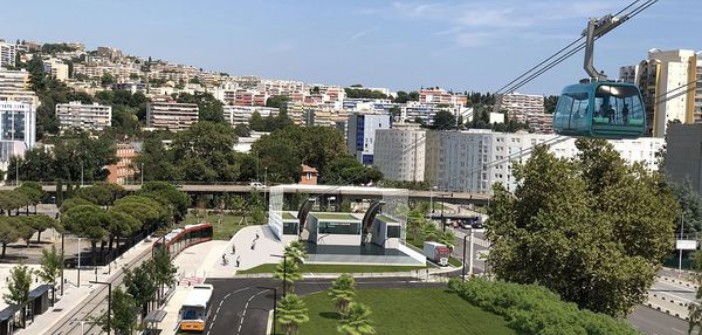The NCA Metropolis has officially expanded with the announced inclusion of two new municipalities, Châteauneuf Villevieille and Drap, bringing its total to 51.
“Initially, in 2012, there were 46,” commented its founder and president, Christian Estrosi, “which means that this community has been able to meet the expectations and needs of the municipalities and their residents in terms of presence and solidarity.”
An ecological morning (or Green&Blue, as it’s trendy to say) at the Metropolitan Council, during which the main deliberations focused on and advanced the transformation of Nice and its territory under an anti-pollution and decarbonization plan.
In this vein, the metropolitan majority approved, sometimes unanimously (showing that things can have their legitimacy even if politically opposed), in other cases with abstentions, and in others with votes against from one or both opposition groups, RN and EE-LV, regarding various plans and projects.
First, the definition of CTEZ (downtown Nice and Promenade des Anglais).
Then the implementation of a comprehensive plan encompassing all mobility actions to achieve a reduction in pollutant emissions.
In this regard, it should be noted that Christian Estrosi, assisted by his deputies Richard Chemla and Gaël Nofri, aims to achieve a harmonious coordination (as much as possible) among the various modes of transport, be it by car, public transport, bicycle, or pedestrianization.
In this context, the redevelopment of the Gambetta-Promenade axis is emblematic: widening sidewalks and beautifying them, adding greenery, creating bicycle and bus lanes, and launching High Level of Service Buses (BRT) which will serve as “trams.” A consultation with the population showed a largely favorable response to this plan.
Similarly, a subsidy grid is planned to assist in acquiring bicycles among the different options available in this market sector.
Another project, previously discussed, also reached its conclusion following the favorable outcome of citizen consultation: the cable car line that will link Nice and Saint-Laurent du Var, with the aim of minimizing car crossings over the Var bridge, a crossing point for entering Nice from the west, bypassing Nice via Saint-Isidore and intersecting with the 202bis, the Carros-Le Broc industrial area. An unusual and surprisingly innovative solution, but adopted by many cities at the European and global levels.
In the ensuing discussion (why not a bridge or a footbridge?), during which the mayor of Saint-Laurent, Joseph Ségura, provided a convincing response to the doubts expressed by ecologist Jean-Christophe Picard, Christian Estrosi (wearing the dual hats of Deputy President of the Region and President of the Metropolis) presented information that entirely changes the situation: the transfer of the management of the Provence Railways from the Region to the Metropolis and the option of extending the current line to the Manca bridge to connect companies located in the Le Broc industrial area by public transport.
Finally, last but not least (as our English friends would say), a project call, symbolically named after Antoine Risso, was presented by deputy Richard Chemla: “Towards the ecological transition” will allow associations or citizens to submit local projects related to environmental health, nature reclamation and biodiversity preservation, and circular, social, and solidarity economy. The intervention scope is broad, which will enable the jury (a timeline has been established, and should allow awarding about fifteen proposals before the summer) to collect grassroots projects and, above all, create a platform for citizen participation.
We have lost 10 square meters, on average, per #housing, since the 1970s.
We must put an end to this drift.
With this charter, we demonstrate courage and audacity!#CMNCA pic.twitter.com/nyg6Ezvog3
— Anthony Borré (@anthony_borre) December 16, 2021


